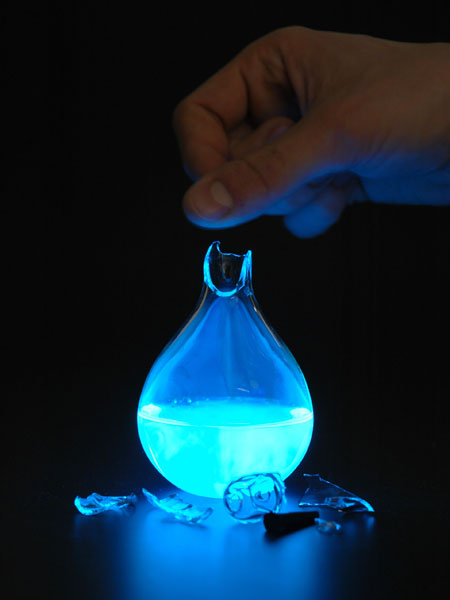
Mike Thompson‘s latest project, Latro, again examines using biology as an energy source. Actually, it’s not really a device at all, but rather simply a mock up of a device. According to the detailed description Latro uses 30-nanometer gold electrodes to extract electrical current from the chloroplasts of algae. Like his previous work, owners must consider the source of the energy they are receiving. Before they had to make a cost-benefit calculation, and now they must maintain and care for the energy source.
The Yansei/Stanford team that inspired this work successfully drew a currents of between 1.2 – 12 pA depending on light intensity. Thompson points in terms of amps per area, this is 0.6 – 6.0 mA/cm2. Photovoltaic cells currently operate at about 35 mA / cm2. Extracting a few electrons from photosynthesis is interesting, but it’s hard for me to think of how this could scale to anything beyond a lab bench curiosity, since you need a nanowire in each chloroplast you want to siphon from. So why do this? The Yansei/Stanford team wasn’t actually trying to create a power source, but rather wanted to study electron transfer in photosynthesis.
Clearly, photosynthesis extraction isn’t going to to replace photovoltaics, but it is interesting to think of a world where technology has biological components. Say <biological neural networks to solve complex problems. A sort of biopunk world, or perhaps just Star Trek circa 2370.
